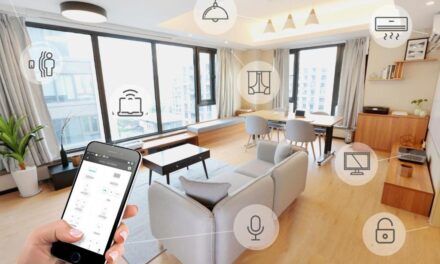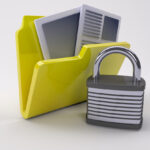EQUIPMENT YOU NEED TO START CAPTURING AWESOME VIDEOS | THE ESSENTIAL VLOGGER STARTER KIT
The proliferation of stable broadband connectivity in Malaysia has also brought about a growth in people sharing, creating and viewing video content on social media. Malaysians are hopping onto popular social media platforms like Facebook and YouTube as well as other alternative platforms like TikTok and WeChat to view and share all manner of content from beauty tips to current events. Some users feel a higher calling and rather than just enjoy content, they want to create their own and share it with the world. Enter the vlogger.
Vloggers can hop onto the soapbox that is social media and then create all manner of videos whether it’s a walkthrough for a food recipe or even a live tour of their neighbourhood.
Are you keen to become a vlogger?
Here’s the equipment you need to get started! Keep scrolling…
- A GOOD CAMERA OR SMARTPHONE
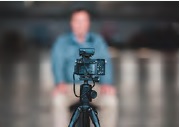

This is the cornerstone of your vlogging efforts and the most important piece of equipment that you will need. All your efforts will revolve around this and the quality of your video is contingent on what you purchase so it’s well worth it to invest a little more to get a high quality video that will have viewers coming back for more. You don’t necessarily have to purchase the highest end DSLR. Many prosumer compact cameras and flagship phones in the current market are powerful enough that you can use them as a general workhorse for all your vlogging work. You will also have to factor in what sort of videos you will be taking. If you’re generally aiming to take footage indoors or in places with good lighting, a high-end smartphone or compact camera will work just fine. If you’re looking to capture more robust activities like jungle trekking, water sports and the like, you will likely get better results buying an action camera – this category of camera is small and built like a tank to survive drops along with improved water resistance for some models. If superb image quality is paramount over all other concerns, a DSLR would be ideal but you will have to factor in the weight and the fact that it needs a lot of extra gear – batteries, lenses and the like – to retain effectiveness in the field.
- LIGHTING EQUIPMENT
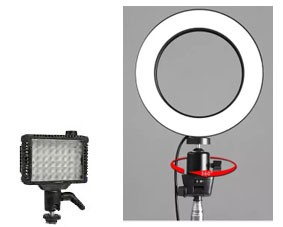
Vloggers aiming to shoot a lot of videos indoors or in dimly lit areas need to get some form of lighting to get viewable footage. Even if the lighting is good, a strategically placed light can alter the mood of a shoot and make it even more memorable. Depending on the circumstances of where you’ll be shooting and how often you aim to do so, you’ll have to select the right type of lighting equipment so that you get best results without being weighed down by your gear.
For vloggers, one of the more essential pieces of lighting equipment is a ring light that consists of a series of lights in – a ring-shaped array. This setup helps to eliminate shadows when shooting closeup videos of people talking into the camera and makes the subject look more pleasant. They come in a variety of strengths and sizes so you’ll need to shop around for your needs. Another useful bit of equipment are on-camera lights which are essentially hand-sized LED arrays that you can move around and adjust as needed. If you’re starting out and taking a lot of outdoor shots, these portable on-camera lights are ideal as they’re compact and highly portable yet capable of good results if you place them right. A variety of models exist at different price points and with different lighting patterns with some offering a stronger, more concentrated output while others are softer and more diffused. Most models have a built-in battery that you can charge which makes them easier on the pocket too in the long run rather than having to fork out for batteries.
- A TRIPOD OR GIMBAL STABILISER
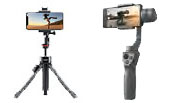
Tripod is absolutely essential for any vlogger or, for the matter, any photographer. Not only do they come in handy to capture steady shots and videos, they are needed if you aim to undertake your vlogging experience solo or aim to take footage for extended lengths of time. Unless you have arms of steel, your hands will inevitably judder if you hold any camera for too long which leads to blurred video or shots. Some types of footage just can’t be captured without a tripod such as time lapse shots, shots in dim lighting conditions, trick shots like starscapes and light trails or lengthy footage of an event such as a lecture, seminar or whatnot.
Tripods come in a variety of sizes and differing levels of sturdiness though you need to factor in what you’ll be mounting first. Pocket sized versions exist that are ideal for smartphones and lightweight cameras but they’re rather short so you’ll need to place them on a table or somewhere high up, if you’re shooting. But it is very portable. If you are using a larger, heavier camera or you need something with a higher angle, you’ll need to get a traditional full sized tripod but they are also rather heavy to tote around.
The nature of a tripod means that it works best if you’re in a static position but what happens if you need to take smooth footage on the go? That’s where a gimbal stabiliser comes into play. A gimbal is a specialised stabiliser with a built-in gyroscope and weights that help to balance out your camera and cancel out sudden movements to ensure silky smooth video. Gimbal stabilisers come in a variety of sizes ranging from small ones designed for smartphones to heavier rigs for even DSLRs too. These are ideal if you aim to take a lot of videos on the move.
- EXTERNAL MICROPHONE
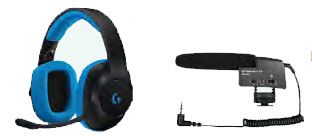
Good audio quality is an essential component towards creating a great video. Even if you capture riveting footage that’s worthy of an Oscar, it isn’t going to work out if viewers have to lip read and guess what you’re saying or if the audio fuzzes out with static on account of wind or background noise. Despite advances in imaging technology in smartphones and cameras that allow them to capture high quality 4K resolution footage, it is often the case that audio quality takes a backseat and most phones and cameras really can’t deliver good quality audio capture suitable for video with their built-in microphones alone. That’s where a good quality external microphone comes in.
Mention microphone and you’ll likely recall the baton-sized version you will most often see in the hands of singers on stage and on broadcast newscasters but vloggers fortunately have a host of lighter, more portable alternatives. Vloggers who have more static setups and who shoot primarily indoors can acquire a microphone headset which combines headphones and a flip-down mike but these headsets need to be plugged in via USB to a PC to work. Some of the higher end headsets also have noise cancelling built in which is very handy.
For vloggers who are shooting a lot of footage outdoors, a shotgun microphone may be a better bet. They mount onto a small camera and enable you to capture clearer audio in a cone focused directly in front of the mike. Vloggers looking for a more entry level solution can opt for smaller microphones that are designed to mount onto smartphones but they generally have limited range.
Sumber: SHOUT 2019 BUMPER EDITION






